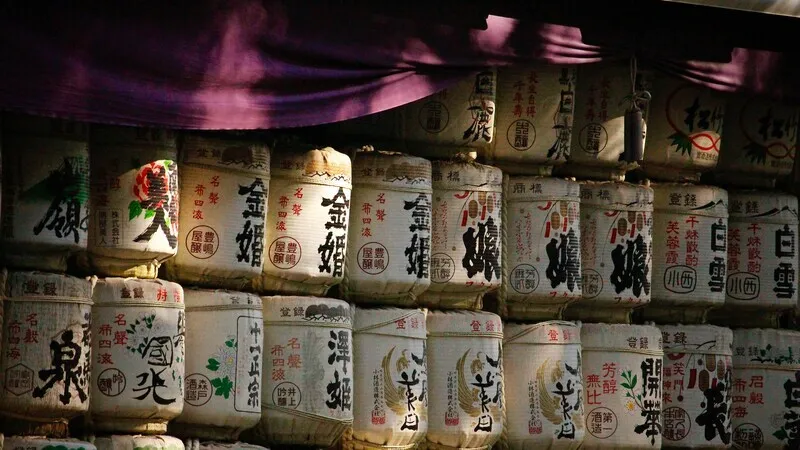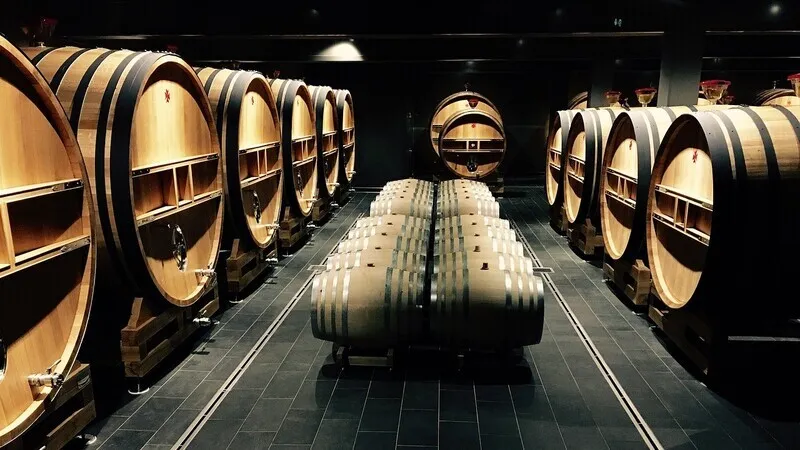What you don't know is what you don't know! A Thorough Explanation of the Difference Between Sake and Sake Brewing and What It's All About

What is sake? How is it different from Sake?
Do you want to know more about its charms, but don't know where to start?
This article will explain the basics of Japanese sake (Seishu) in an easy-to-understand way for foreign visitors to gain a deeper understanding of this fascinating world.
■ What you will gain from this article:
- Relationship between Sake and Sake Brewing
- Basic Types and Characteristics of Sake
- Sake Production Process and Drinking
- International Evaluation of Sake
After reading this article, you will have a basic knowledge of sake and a deeper understanding of how to enjoy it.
What is the difference between sake and sake-like alcohol?

Sake and sake are often used similarly, but they actually have different definitions.
Sake" is a generic term for alcoholic beverages fermented with rice, rice koji, and water as the main ingredients, and must have an alcohol content of less than 22%. The definition of sake is based on the National Tax Agency's Sake Tax Law, and includes sake made outside of Japan and sake made from rice produced overseas.
On the other hand, the term "sake" refers only to sake brewed in Japan using rice and rice koji produced in Japan. Sake made outside of Japan or sake made with rice produced overseas cannot be labeled as "sake.
While the term "sake" is commonly used in everyday conversation, the legal name "seishu" is often used on product labels and in technical literature.
Reference:What is the difference between Sake and Sake Brewing? History and types of sake explained.
Basic Definition and History of Sake (Sake)
Sake is a traditional brew made primarily from rice, rice malt (koji), and water. It is characterized by its clear and clean appearance, and its alcohol content ranges from 15 to 161 TP114T.
The history of sake brewing began with rice cultivation, and it has been an integral part of Shinto rituals since ancient times. Subsequently, brewing technology made great progress from the Kamakura to Muromachi periods, and in the Edo period (1333-1568), the sake brewing technology leading to the present day was established.
During the Meiji Era, legal regulations were established and quality improved dramatically with the development of science and technology. Then, during the period of rapid economic growth after World War II, major manufacturers emerged and further development was achieved.
In this way, sake continues to evolve with the times while preserving traditional production methods.
Reference:History of Sake|Japan Sake Brewers Association
Comparison of Sake (Seishu) with other alcoholic beverages
To better understand the characteristics of sake, let's compare it to other typical sakes.
| liquor | main raw material | alcohol content (usu. expressed per cent) | feature | manufacturing method |
| Japanese Sake (Seishu) | Rice, rice malt, water | 15-16% | Delicious rice flavor, delicate aroma | parallel double fermentation |
| beer | Malt, hops | 4-5% | Refreshingly bitter, carbonic acidic stimulation | monofermentation |
| wine | grape | 11-15% | Fruity aroma, acidity | monofermentation |
| whisky | Barley, corn | 40% or higher | Strong aroma, long finish | distillation |
Of particular note in this comparison is the "parallel double fermentation" process unique to sake. This is a process in which the rice is saccharified and fermented at the same time, producing the complex flavor unique to sake.
For example, the "umami" taste you experience when drinking sake is due to the amino acids produced in this parallel double fermentation process. The fruity aroma characteristic of ginjo-shu is also a result of this process.
Thus, sake can be made into a variety of tastes depending on the unique process used to make it. Let's take a closer look at the different types of sake in the next section.
Types and Characteristics of Sake

There are many different types of sake, each with its own unique flavor and aroma. Let's take a closer look at the characteristics of each type, from junmai sake to daiginjo-shu.
Typical types of sake
Among sake, those made with particular attention to ingredients, milling ratio (ratio of rice to be milled), and production method are called "tokutei meishoshu" (sake with a specific name). This title is given to sake that meets the standards for ingredients and production methods, and is divided into the following three main categories.
1. junmai-shu
Junmai-shu is sake made from rice, rice malt, and water, and is characterized by the fact that no brewing alcohol is added. Junmai sake has a rich taste and full aroma of rice, and is attractive and relatively easy to drink, even for beginners. It is popular as a type of sake that is particularly "sake-like" among sake.
Example:Junmai Sake Yamadanishiki,Otters Junmai Daiginjo
2. honjozo-shu
Honjozo sake is made from rice with a milling ratio of 70% or less, rice malt, brewing alcohol, and water. Unlike junmai-shu, brewing alcohol is added to give it a clean, dry flavor that can be enjoyed either cold or at room temperature. It can be enjoyed cold or at room temperature. It is also recommended as an in-between-dinner drink, as it is generally less aromatic and has a simpler flavor than ginjo-shu.
Example:Special Honjozo Hakkaisan,Kenryo Shuzo Kuromatsu Kenryo
3. ginjoshu
Ginjo-shu is sake made from rice polished to 60% or less, rice malt, water, and brewers' alcohol, and is produced by a process in which the rice is fermented slowly at a low temperature of around 10 degrees Celsius. The distinctive aroma, taste, and color must be good for ginjo-shu. It is characterized by its fruity and gorgeous aroma and is generally drunk cold.
Example:Kubota Ginjo Senju,Haruhide Daiginjo
Reference:What does "Tokutei Meishu" mean? Do you know the types and definitions of sake?
Sake Production Process

The sake production process is a complex art form that combines thousands of years of traditional techniques with modern science.
The production process is very delicate, and every step has a significant impact on the final taste. The main steps are as follows
- Polishing (Seimai)
- Rice polishing is the first step in sake brewing. In this process, the surface of the brown rice is scraped, leaving only the center where the starch is concentrated.
- Rice washing and soaking (Senmai/Shinseki)
- Wash milled rice and allow it to absorb a moderate amount of water.
- Steamed rice
- After washing and soaking, the rice is steamed.
- Soybean flour
- The steamed rice is then bred with sesamum bacteria to produce enzymes.
- stocking up (on)
- Sake is fermented by mixing the mame, steamed rice, water, and yeast. Parallel double fermentation," which is unique to sake, takes place during this process.
- Upper tank (upper tank)
- Sake is squeezed out of the unrefined sake after fermentation is complete.
- Firing and Storage
- The sake is heated to inactivate and stabilize the enzymes. It is then stored for aging.
Sake is completed through these processes. The detailed adjustments made in each process determine the quality and taste of the sake. For example, even if the same rice is used, changing the rice polishing ratio, the method of making koji, or the fermentation temperature will produce a completely different flavor.
By learning about this complex production process, you will be able to further enjoy the diversity and depth of sake. It will also make it easier to understand the information on the label about the production process and the rice used to make the sake, making it easier to find the sake that best suits your tastes.
Sake Drinking

Sake is an alcoholic beverage that can be enjoyed in a variety of ways, with the flavor changing depending on the temperature and serving vessel. Sake is also deeply connected with traditional Japanese culture. Here we introduce the various ways of drinking sake.
Changes in taste created by the temperature and vessel for sake
One of the charms of sake lies in its versatility. Sake can be enjoyed in a variety of ways, as its flavor changes depending on the temperature and container.
1. differences due to temperature
Cold sake (5-10℃)
You can enjoy its freshness and delicate aroma. In particular, ginjo-shu and daiginjo-shu should be served chilled to maximize its fruity aroma.
Room temperature
The well-balanced flavor can be felt. It is suitable for enjoying the original flavor of sake.
Lukewarm (30-40℃)
It increases mellowness and umami. Especially for junmai and honjozo sake, lukewarm heating enhances the flavor of the rice.
Hot sake (45-50℃)
It eases the feeling of alcohol and warms the body. It is especially popular in winter and on cold days, and is suitable for sake with a rich flavor.
2. differences by vessel
cups and cups for sake cups
It is a small cup that can be tasted in small quantities. It is a traditional way of drinking, often used especially when enjoying hot sake.
wine glass
It is easy to enjoy the aroma. It is especially suited for sake that emphasizes aroma, such as ginjo-shu and daiginjo-shu.
A sake bottle and a cup
This is a traditional way of drinking sake and can be enjoyed slowly. Sake in a tokkuri is poured into the cup little by little to enjoy the changing flavors.
3. drinking variations
straight
This is the most common way to enjoy the true flavor of sake.
rock
This method of drinking sake with ice is popular in summer. It is especially suited for sake with high alcohol content, such as hara-sake.
soda water
You can drink it lightly by mixing it with soda water. You can enjoy a refreshing taste while lowering the alcohol content.
These drinking styles can be chosen according to season, taste, and food pairings. For example, you can enjoy sake cold or on the rocks in the summer and hot in the winter, depending on the season. Also, by changing the temperature and drinking style to match the food, you can enjoy a richer dining experience.
International Evaluation of Sake and Future Prospects

Sake is highly regarded internationally, but new challenges are needed for further growth. Let us consider the challenges and possibilities here.
Sake's reputation in the world
In recent years, sake has gained an international reputation.
1. increase in export volume
According to data from the Ministry of Agriculture, Forestry and Fisheries, sake exports have tripled over the past decade, with demand growing especially in the United States, China, Hong Kong, Taiwan, and South Korea.
In terms of export volume, the export volume in 2022 was about 39,894 kiloliters, which amounted to about 48.49 billion yen in value. This is an increase of 2.8 times in volume and 5.4 times in value compared to 2012, 10 years ago.
Reference:Export performance of agricultural, forestry, marine products and food products in 2022
2. recognition in international awards
Sake is increasingly winning awards in international sake competitions, such as the Sake category of the International Wine Challenge (IWC). In 2024, 1,504 sake products were entered in the SAKE category, 93 of which were awarded gold medals. These awards are a major boost to the overseas expansion of sake.
3. synergy with the Japanese food boom
As the popularity of Japanese food grows around the world, so does the demand for sake. The culture of enjoying sake along with other Japanese foods such as sushi and ramen is spreading.
For example, in major cities such as New York and London, not only Japanese restaurants but also bars specializing in sake are beginning to appear.
Future Prospects and Challenges for Sake
The sake industry continues to take on new challenges while preserving its traditions. Let's take a look at what the future holds.
1. search for new production methods and raw materials
Technological innovations such as yeast research and the development of new rice varieties are underway. For example, in Yamagata Prefecture, a new rice variety called "Yuki-Majin" has been developed exclusively for sake, and its characteristics have been utilized to create sake with a unique flavor. New types of products such as low-alcohol sake and sparkling sake are also being introduced one after another.
2. product development for young people and women
In order to broaden the consumer base for sake, product development for younger consumers and women is underway. For example, new fruity and easy-to-drink sake products are being developed, package designs are being redesigned, and new ways of drinking sake, such as sake cocktails, are being increasingly proposed.
3. technical succession and succession issues
The challenge is to pass on traditional manufacturing techniques and train young toji (brewing artisans). For example, some breweries are actively training young employees as toji (master brewers) and collaborating with universities to conduct research on brewing techniques.
By addressing these issues, the sake industry aims for further development. In addition, increased recognition in overseas markets could further increase sake exports and make it one of our most important exports. It will continue to develop as a favorite of people around the world while maintaining a balance between tradition and innovation.
summary
The world of Japanese sake (Seishu) has a wide range of profound attractions. In this article, we have explained the following points.
- Sake and sake are synonymous
- Sake is a unique brew made mainly from rice, rice malt, and water
- Junmai sake, honjozo sake, ginjozo sake, etc.
- The production process is complex and each step affects the final taste
- The drinking style changes depending on the temperature and vessel, offering a variety of ways to enjoy it.
- Internationally acclaimed, exports are increasing
Through this article, you will be better prepared to enjoy sake more deeply by learning the basics of sake and the various ways to enjoy it.
Next time you go to an izakaya, please use the knowledge you have learned this time to choose the sake that suits you best!
Your support will help us!
Thank you for visiting Goandup Picks. Our mission is to provide you with more useful information to show the world what Japan has to offer.
Your support will help us to further enhance our activities, so please support us!






